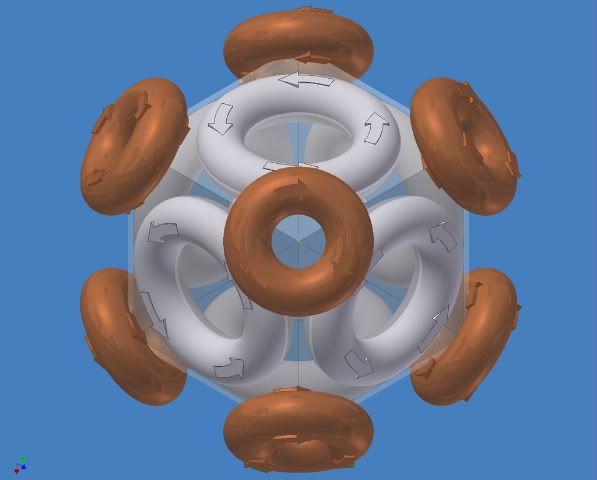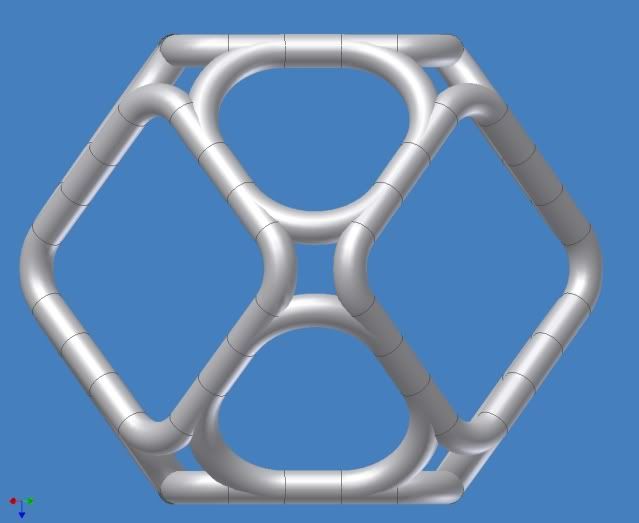True that the truncated facet would be square, but the main facets are then triangular. Win some, lose some.VernonNemitz wrote: To KitemanSA, one reason I've mentioned an octahedron more than once, for the facet coils, is because there are 4 facets at each corner instead of 3. That means a round corner coil is a better shape for an octahedron corner than any other polyhedron for a Polywell (except the icosahedron which has five facets connecting at each corner).
In the WB7 there are three sets of "weak spots", none of which are actually weak fields but very strong fields. They just have very little transverse (tangential) field component. The very strong fields are all radial. Since what confines is the tangential component, the cusps are holes in the confinement, not necessarily in the field.Regarding weak spots in the overall magnetic field, I'm pretty sure it is well established that the weak spots are the centers of the facets and the corners. So, if the facets have appropriately strong magnet coils, and the corners are enhanced with real coils, then any place not covered (the nubbin zone, for example) doesn't really matter; that place was not a weak spot in the first place, and will not become weak just because we added extra magnetism.
The three sets are, the real point cusps at the center of the faces, the virtual point cusps at the center of the virtual magnets that are the facets, and the line-like cusps where the nubbins are. At leat one source has suggested that the line-like cusps dominate the loss factor. At least one other suggests that they don't. Ah, my kingdom for some data!!!!

